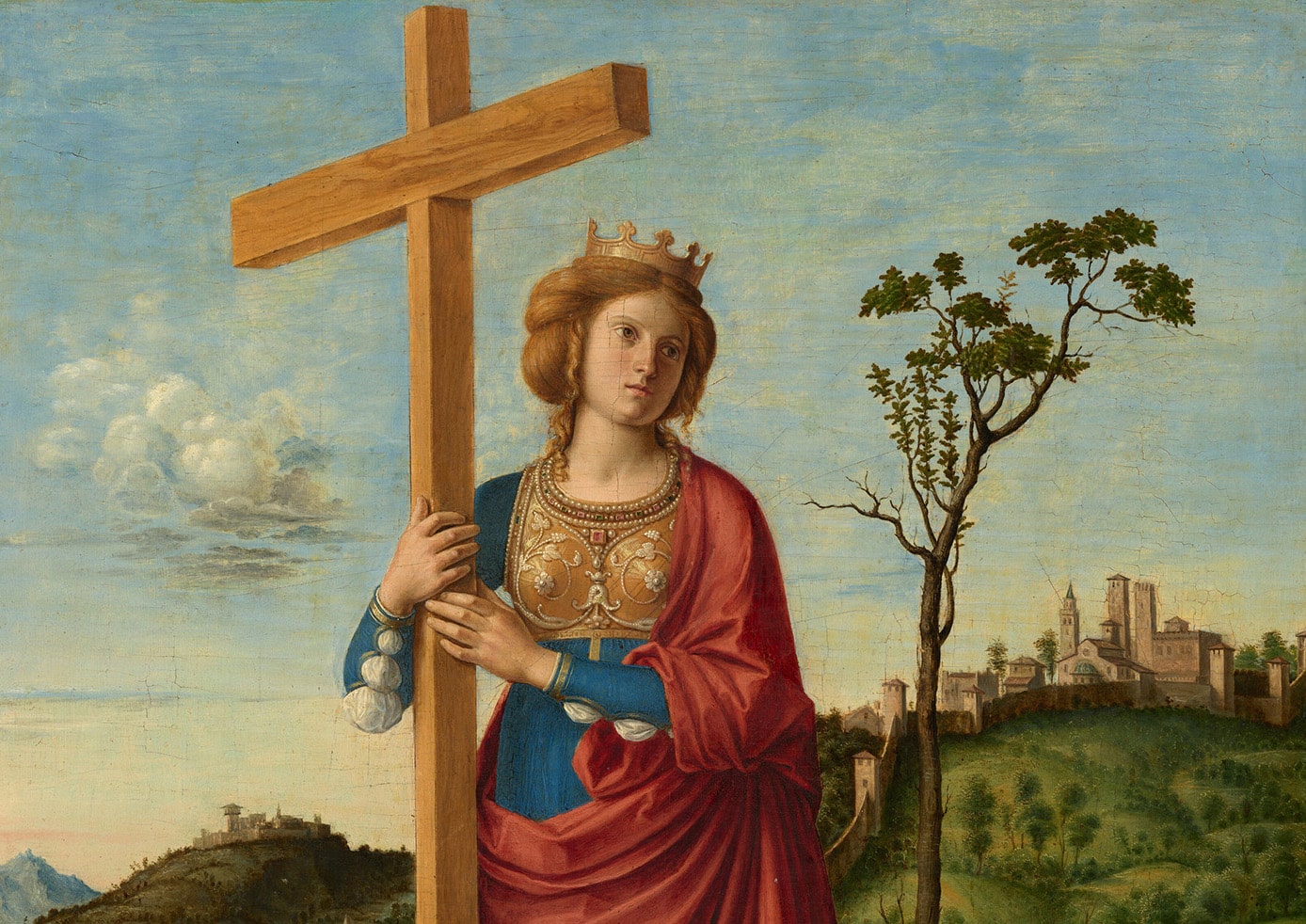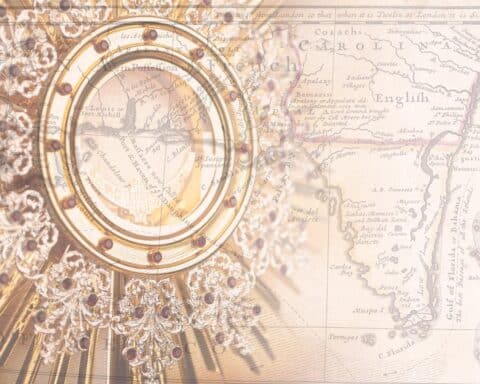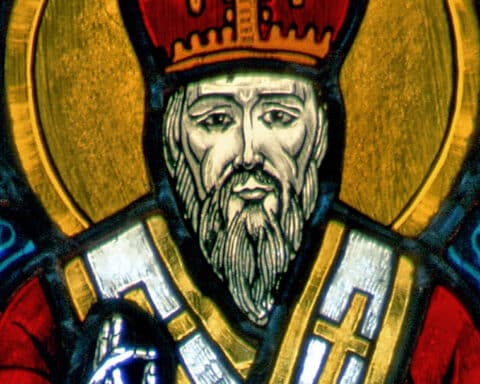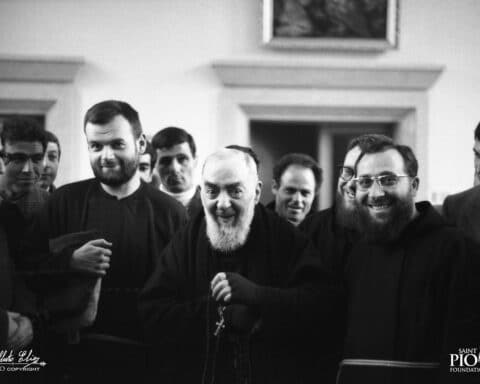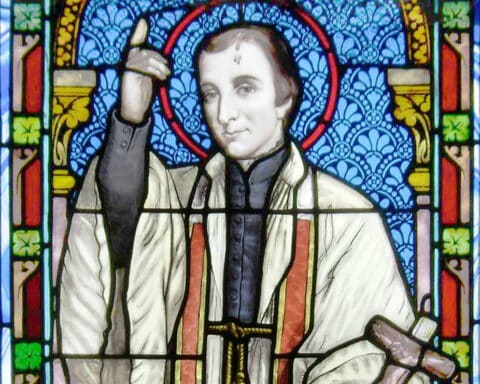The National Gallery of Art in Washington, D.C., invites visitors to explore the lives of heroic women — saints in the Church — through art every day. The museum presents a special opportunity for Catholics on International Women’s Day.
Instead of producing a photograph, art seeks to reveal underneath a likeness — a likeness that may or may not actually look like the person involved — that tries to expose something deeper, Rome-based art historian Elizabeth Lev told Our Sunday Visitor.
One way to look at images and art, including that of the saints, she said, is by examining the symbols included.
“If we’re looking at a palm frond, we see a symbol of victory, someone that’s martyred, someone who’s crossed the finish line of heaven,” Lev described. “When we see Lucy holding a tray with two funny-looking balls on it, those are her eyes and a reminder that this woman was so courageous that even when they took her eyes, she continued to bear witness to the Lord.”
“When we look at … the clothes that they wear, some women were regal, Catherine of Alexandria was a princess,” she added. “But other women were very simple, were very humble.”
A way to encounter women saints
Art, she said, opens up a new way of encountering women saints and drawing inspiration from them.
“We have this wonderful way of gaining insight to these different women who have each blazed a trail to heaven,” she said. “The more types of symbols that we can find in the art that open up more paths to heaven, the more ways women — whether they are virgins, whether they are mothers, whether they are women who have made wrong choices in their lives and then [manage] to get themselves on the right path — each one of them is able to guide and help and encourage.”
Here are 10 paintings from the National Gallery that shed light on revolutionary women who responded to God’s call to change the Church and the world — each in her own way.
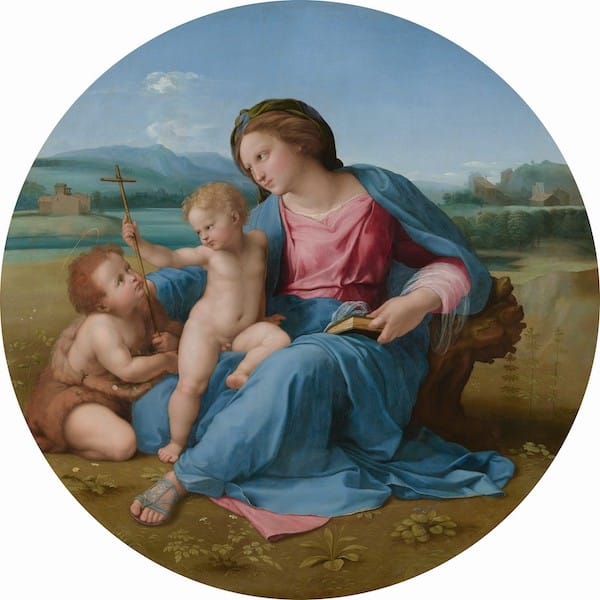
1. Mary, Mother of God
“The Alba Madonna” by Raphael (c. 1510)
In one of the more famous sacred works of art at the National Gallery, Italian artist Raphael anticipates Christ’s sacrifice in a scene from his childhood that features Mary, his mother, and St. John the Baptist.
“Mary, Jesus, and John the Baptist are linked — by gaze, pose, and understanding — as they contemplate the cross Jesus takes in his hand,” the National Gallery describes. “With calm gravity they apprehend the gesture’s significance: in this moment all see and accept Christ’s future sacrifice. But the limitlessness of the circular panel, its clear colors, and the Virgin’s radiant beauty hold out the promise of Grace.”
Little details, such as the flowers included, reveal more about Our Lady, whose eyes study the cross: The Cyclamen (located at the top left) refer to her love and sorrow, while the violets (bottom right) point to her humility, according to the National Gallery.
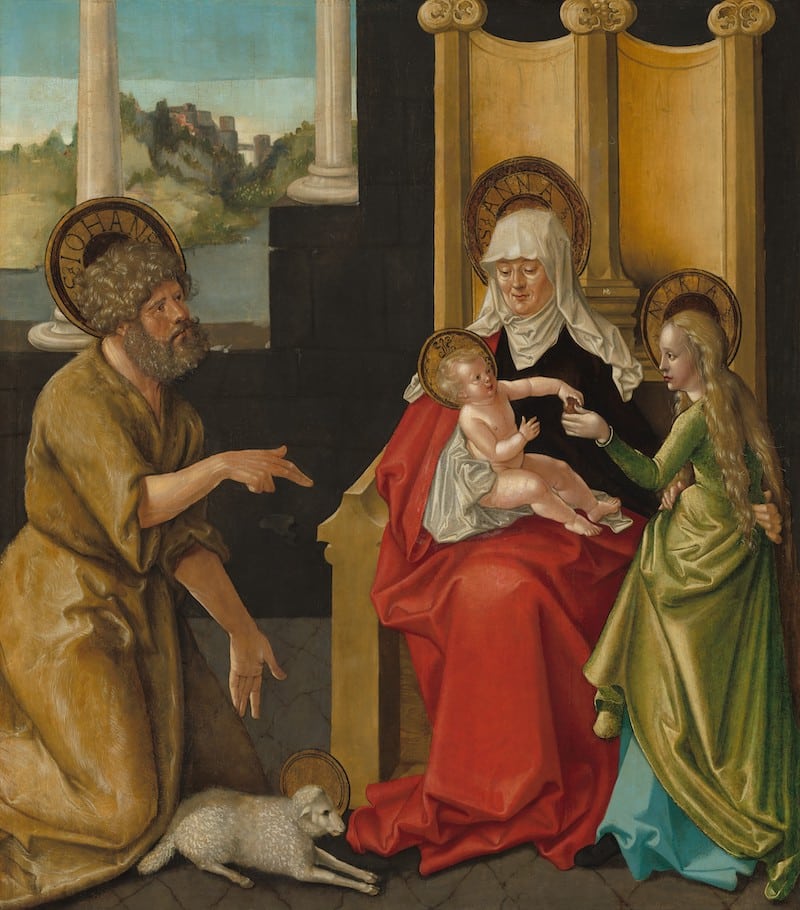
2. St. Anne
“Saint Anne with the Christ Child, the Virgin, and Saint John the Baptist” by Hans Baldung Grien (c. 1511)
In this colorful painting bursting with symbolism, German artist Hans Baldung Grien illustrates St. Anne as both grandmother and mother. With one arm, she cradles her grandson, baby Jesus; with the other, she embraces her daughter, Mary. Her gaze rests on Jesus while a smile plays on her lips. St. John the Baptist kneels to the side.
“The Virgin’s mother, Saint Anne, although dressed in a sixteenth-century wimple, wears her traditional robe of red, a symbol of divine love,” the National Gallery’s description reads.
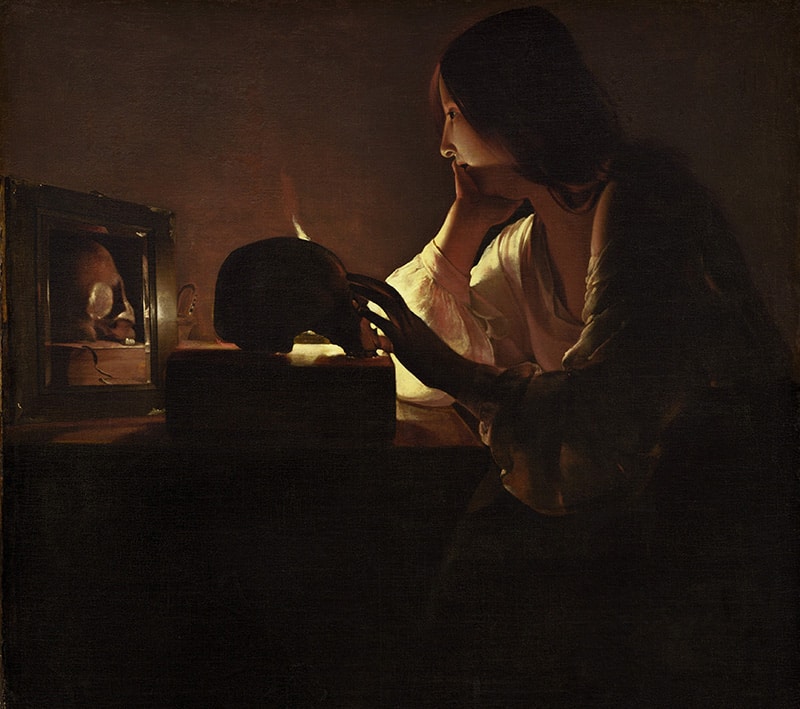
3. St. Mary Magdalene
“The Repentant Magdalen” by Georges de La Tour (c. 1635/1640)
As with many of his artworks, French artist Georges de La Tour plays with light in this portrayal of St. Mary Magdalene that evokes “a haunting silence,” according to the National Gallery.
At the time, Mary Magdalene, an early disciple of Christ who witnessed his crucifixion and resurrection, “was an example of the repentant sinner and consequently a symbol of the Sacrament of Penance,” the description says.
She appears alone by candlelight, resting her fingers on a skull propped up on a book.
“A candle is the source of light in the composition, but the light also carries a spiritual meaning as it casts a golden glow on the saint’s face and the objects assembled on the table,” the description adds.
The skull appears twice, with its reflection captured in a mirror. The description calls the skull and mirror “emblems of vanitas, implying the transience of life.”
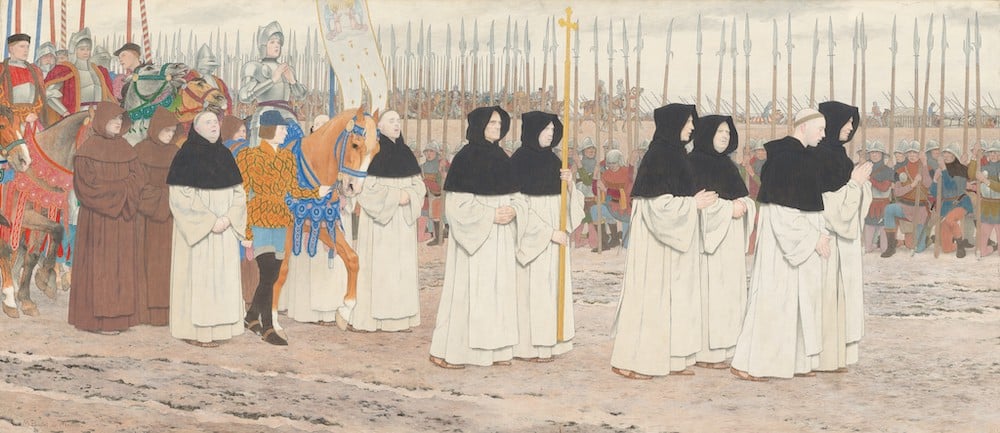
4. St. Joan of Arc
“The Maid in Armor on Horseback” by Louis Maurice Boutet de Monvel (c. 1908-late 1909)
This work of art is one of six depicting the story of St. Joan of Arc by French painter and illustrator Louis Maurice Boutet de Monvel. The saint, who fought for France in the Hundred Years’ War against the English, died at the stake in 1431 after being convicted of heresy.
Wearing a full suit of armor, Joan appears to march into battle on horseback, with her eyes raised and her hands clasped in prayer. Monks process ahead of her, while soldiers kneel to the side. A banner features the fleur-de-lis beneath a crown and two praying angels.
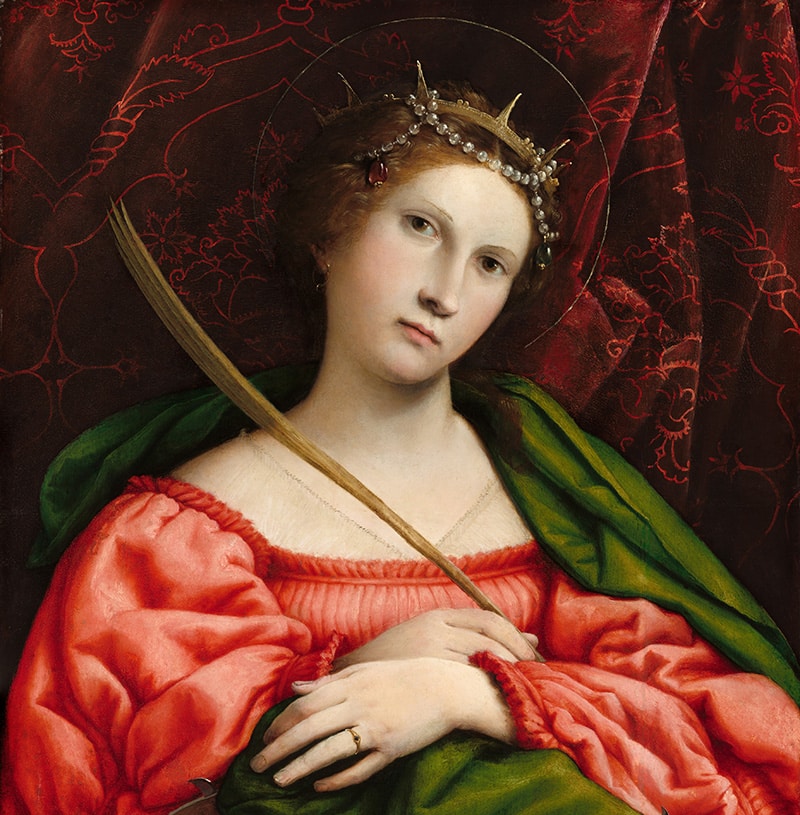
5. St. Catherine of Alexandria
“Saint Catherine” by Lorenzo Lotto (1522)
In this photographic-like painting by Italian painter Lorenzo Lotto, St. Catherine stares intently into the eyes of the viewer. The rich colors and ornate dress distract from the spiked wooden wheel and palm frond this early Christian martyr grasps below.
This holy woman often appears in paintings with a spiked wheel, which not only symbolizes martyrdom but also victory; while condemned to die by a spiked wheel, she miraculously survived before being beheaded.
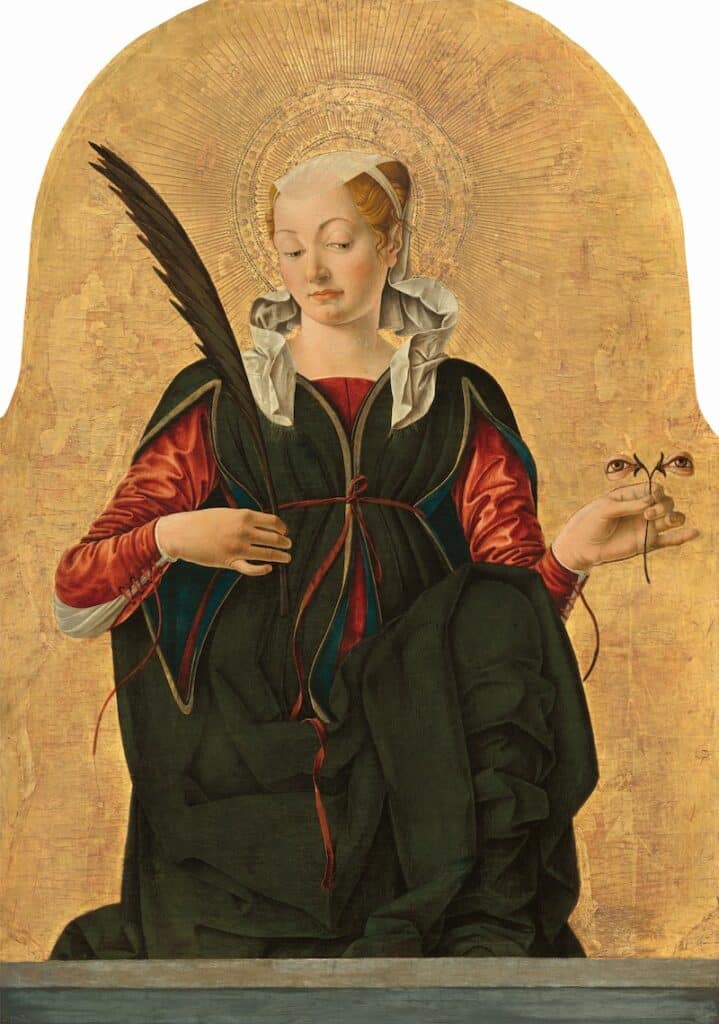
6. St. Lucy
“Saint Lucy” by Francesco del Cossa (c. 1473/1474)
In Italian artist Francesco del Cossa’s golden-colored painting, once part of an altarpiece, St. Lucy appears draped in red and green garments with an elaborate halo around her head. In one hand, she holds a palm frond; in the other, a stem with two eyes sprouting from it.
According to different accounts, this early Christian martyr either had her eyes removed during torture or plucked them out herself to discourage a suitor before they were miraculously restored.
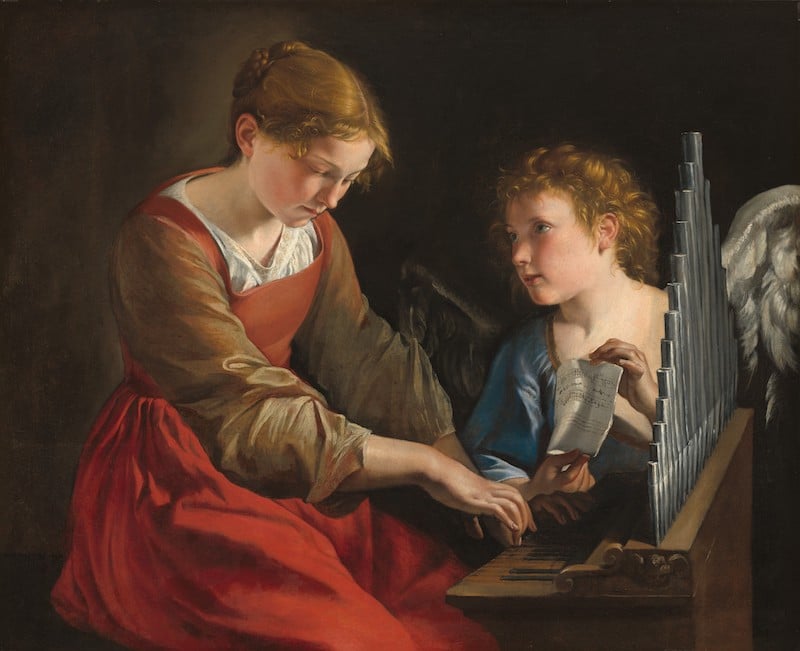
7. St. Cecilia
“Saint Cecilia and an Angel” by Orazio Gentileschi and Giovanni Lanfranco (c. 1617/1618 and c. 1621/1627)
This painting from two Italian artists depicts another early Christian martyr. St. Cecilia dances her fingers across the keyboard of a small pipe organ while an angel gazes upon her, holding up the music score. The lighting casts a gentle glow around the two of them.
The saint, often pictured with music, is said to have sung with her heart to God.
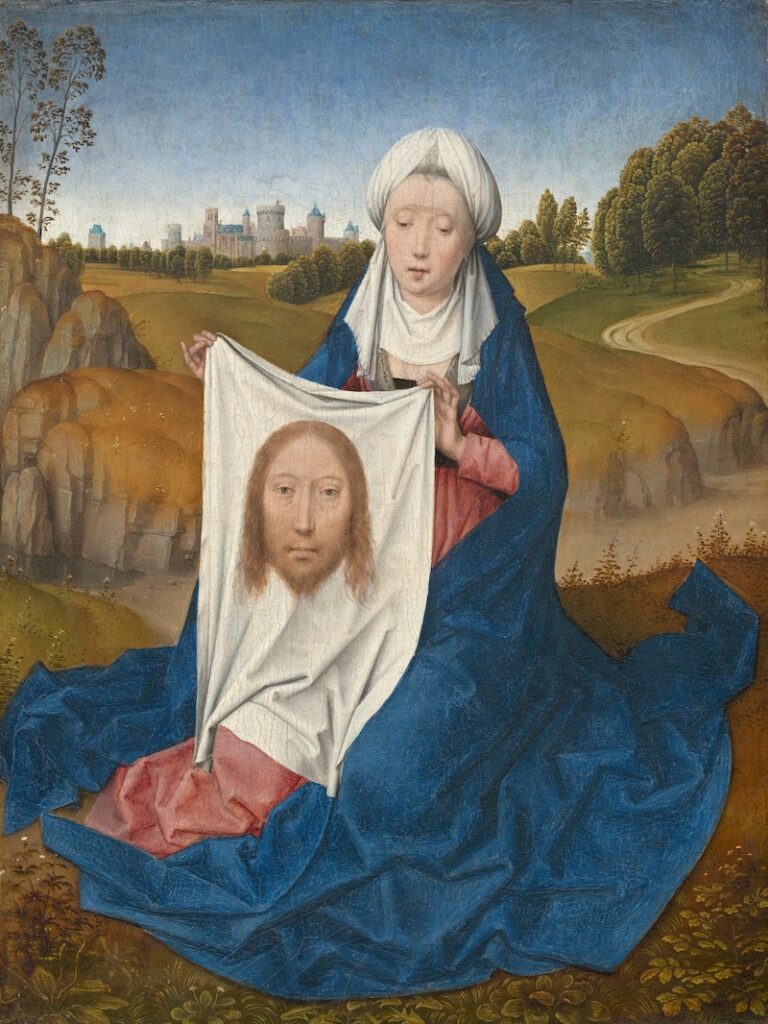
8. St. Veronica
“Saint Veronica” by Hans Memling (c. 1470/1475)
Flemish painter Hans Memling shows St. Veronica holding up the veil with which she wiped the face of Christ during his crucifixion. As she lowers her eyes, she invites the viewer to follow her gaze toward the image of Christ’s holy face left embedded in the cloth. Surrounded by the saint’s ornate garments, his eyes calmly meet those of the viewer.
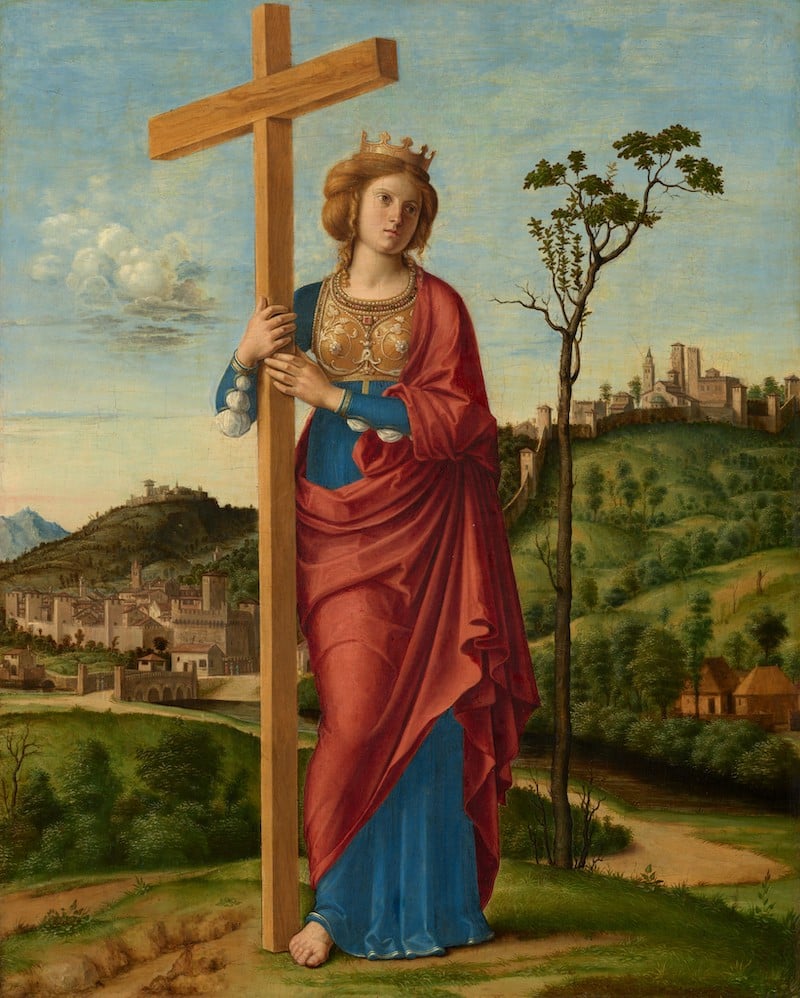
9. St. Helena
“Saint Helena” by Cima da Conegliano (c. 1495)
Italian artist Cima da Conegliano pictures a crowned St. Helena — the mother of Roman emperor Constantine who is credited with finding the true cross — draped in red and blue. While her eyes look outward, she hugs Christ’s cross in the forefront of a scenic landscape.
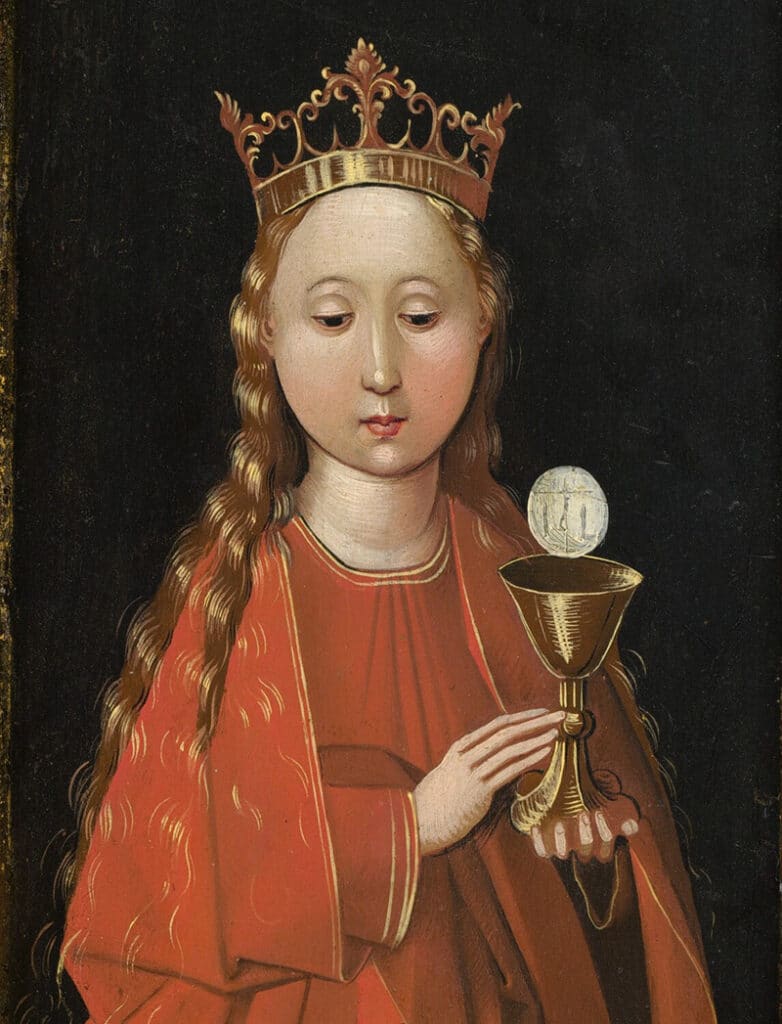
10. St. Barbara
“Saint Barbara” by Master of the Starck Triptych (c. 1480/1490)
A German painter envisions St. Barbara, an early Christian martyr, in a bright red dress with gold trim. A golden crown rests on her long, wavy hair, while her eyes look downward. A Eucharistic host imprinted with the cross levitates above a chalice, cradled between her hands.

